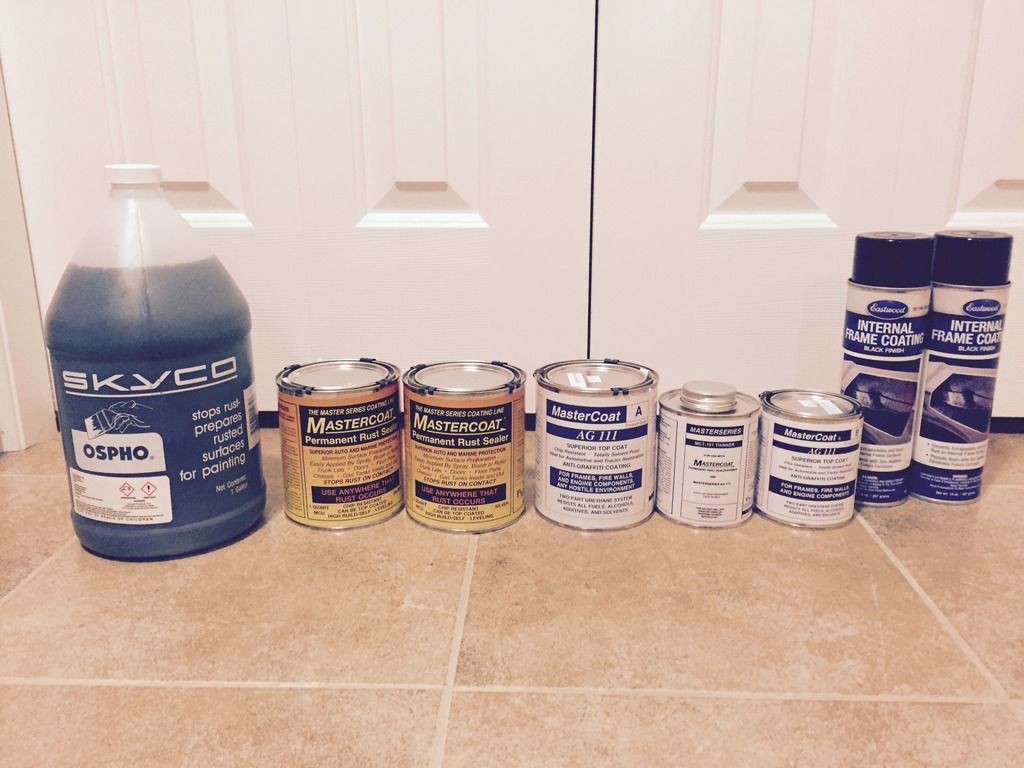
My 1978 Spider progressive restoration
-
Frankd1
- Posts: 135
- Joined: Tue Sep 15, 2015 4:13 pm
- Your car is a: 1978 Spider
- Location: Southwestern Ontario, Canada
-
Frankd1
- Posts: 135
- Joined: Tue Sep 15, 2015 4:13 pm
- Your car is a: 1978 Spider
- Location: Southwestern Ontario, Canada
Re: My 1978 Spider progressive restoration
Can you guys recommend a decent wax remover/degreaser? Something that would be readily available at Home Depot or Lowes....I saw some POR marine clean - is this any good? How about simple green?
Something that won't leave a film or residue...
I was going to go over the floor panels with some 80 grit to get rid of any remaining surface rust and to also give the metal some mechanical tooth. Then vacuum any dust, wipe down with a cloth damp with water and dry.
From there I thought wiping on the wax remover/degreaser would be a good idea before I brush on the Ospho. After the Ospho has dried and neutralized/converted any tight rust, I will top coat with silver primer and then the satin black paint.
Do you think the wax remover/degreaser step before the Ospho is even needed? I thought it might be a good idea..
Thoughts?
Something that won't leave a film or residue...
I was going to go over the floor panels with some 80 grit to get rid of any remaining surface rust and to also give the metal some mechanical tooth. Then vacuum any dust, wipe down with a cloth damp with water and dry.
From there I thought wiping on the wax remover/degreaser would be a good idea before I brush on the Ospho. After the Ospho has dried and neutralized/converted any tight rust, I will top coat with silver primer and then the satin black paint.
Do you think the wax remover/degreaser step before the Ospho is even needed? I thought it might be a good idea..
Thoughts?
-
AriK
- Patron 2018

- Posts: 1149
- Joined: Sat Apr 02, 2011 7:58 pm
- Your car is a: 1979 Fiat Spider
- Location: Montreal Canada
Re: My 1978 Spider progressive restoration
YES YES YES! Prep is key to make it all work especially seeing all the products you have in line, you don't want all that going to waste. You don't want the product to peel because of an unprepped surface.
Por 15 Marine Clean is fine, it's what i used. The instructions are to dilute it with water and keep the areas wet by spraying the solution and keeping it wet for about 15 minutes or so and then rinsing well with water. My instructions (for applying por-15, in your case read the instructions) called for an additional step to etch the metal with a phosphate solution again finally rinsing it all with water. Dry thoroughly ( i abandoned the project for a weekend and then applied compressed air into creases and joints).
I'm afraid Simple Green may not be aggressive enough.
You can purchase the products at Canadian Tire.
Por 15 Marine Clean is fine, it's what i used. The instructions are to dilute it with water and keep the areas wet by spraying the solution and keeping it wet for about 15 minutes or so and then rinsing well with water. My instructions (for applying por-15, in your case read the instructions) called for an additional step to etch the metal with a phosphate solution again finally rinsing it all with water. Dry thoroughly ( i abandoned the project for a weekend and then applied compressed air into creases and joints).
I'm afraid Simple Green may not be aggressive enough.
You can purchase the products at Canadian Tire.
-
Frankd1
- Posts: 135
- Joined: Tue Sep 15, 2015 4:13 pm
- Your car is a: 1978 Spider
- Location: Southwestern Ontario, Canada
Re: My 1978 Spider progressive restoration
Thanks Ari. I did in fact notice the POR marine clean (cleaner degreaser) at Canadian Tire.
I think I will just use that to clean the metal after sanding and vacuuming. After I rinse the marine clean - I am going to use a cloth wet with distilled water vs flooding the area with tap water - I will thoroughly dry everything.
From there I will brush on the Ospho phosphoric acid and let it completely dry. This will neutralize and convert any rust particles that are still present and etch any clean unpitted metal.
I realize that when using the POR system, after the marine clean you use their metal prep product which neutralizes rust and etches the metal. I'm guessing this stuff is a phosphoric acid the same as ospho, so there shouldn't be any issues using the ospho instead.
Once the ospho is dry I will have a good base for painting on the masterseries silver primer and then top coat after.
I think I will just use that to clean the metal after sanding and vacuuming. After I rinse the marine clean - I am going to use a cloth wet with distilled water vs flooding the area with tap water - I will thoroughly dry everything.
From there I will brush on the Ospho phosphoric acid and let it completely dry. This will neutralize and convert any rust particles that are still present and etch any clean unpitted metal.
I realize that when using the POR system, after the marine clean you use their metal prep product which neutralizes rust and etches the metal. I'm guessing this stuff is a phosphoric acid the same as ospho, so there shouldn't be any issues using the ospho instead.
Once the ospho is dry I will have a good base for painting on the masterseries silver primer and then top coat after.
-
DieselSpider
- Posts: 2130
- Joined: Wed Dec 24, 2014 10:21 pm
- Your car is a: 1978 124 Spider with Isuzu Turbo Diesel
Re: My 1978 Spider progressive restoration
I fall back on film remover which is simply pure 100% Isopropyl Alcohol to remove any wax or oily residue left behind after washing.
-
Frankd1
- Posts: 135
- Joined: Tue Sep 15, 2015 4:13 pm
- Your car is a: 1978 Spider
- Location: Southwestern Ontario, Canada
Re: My 1978 Spider progressive restoration
I picked up some marine clean today, I also have isopropyl alcohol (drug store kind) but it is only 70%...
-
Frankd1
- Posts: 135
- Joined: Tue Sep 15, 2015 4:13 pm
- Your car is a: 1978 Spider
- Location: Southwestern Ontario, Canada
Re: My 1978 Spider progressive restoration
I'm looking for some opinions on how to deal with the following area. I've included some pictures of the rear floor panel area, right behind the drivers seat.
You will notice the 2 triangle vents as well as a round hole in the middle. This hole contains a threaded nut which is welded to a bracket which is tacked to the underside of the floor panel - underneath the car. This is where the bolt threads into which fastens the seat belt tensioner for the lap portion of the seat belt:
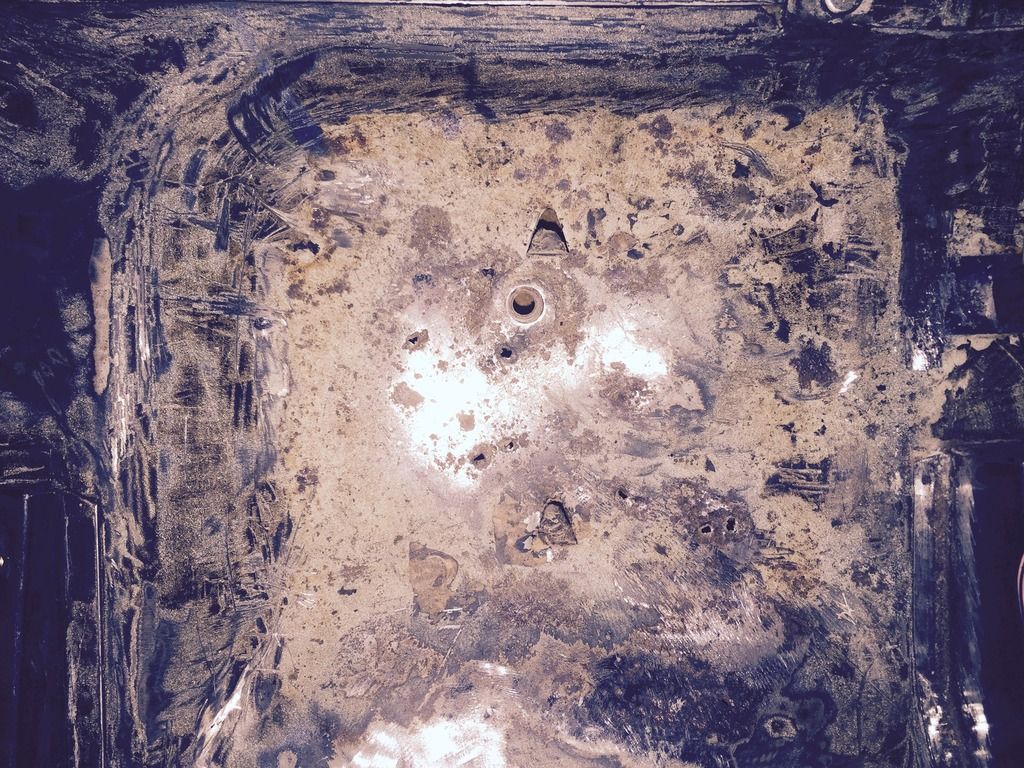
You can also see some pitted areas and in a few of these pitted areas, little holes which I was able to poke through with the tip of a screw driver:
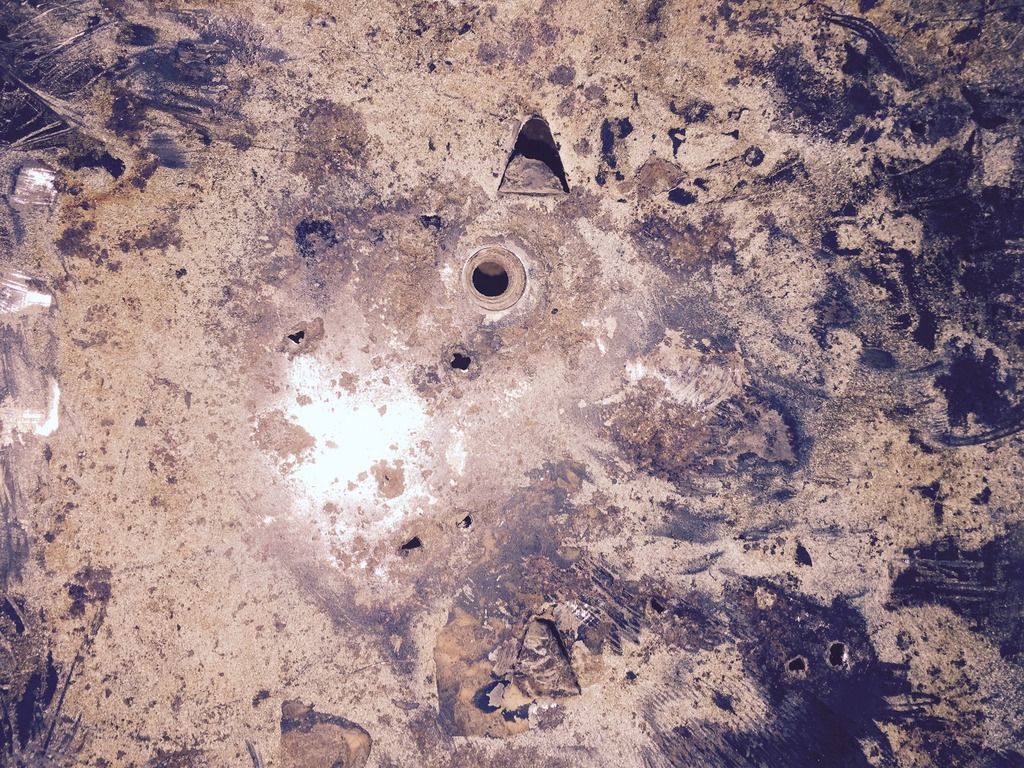
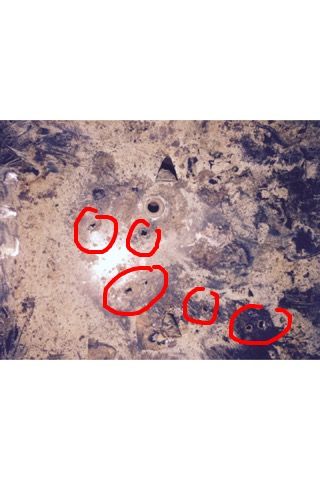
These are the only pitted areas in this part of the panel, the rest of the metal is solid and fine with no rust.I sanded these areas and then brushed on Ospho phosphoric acid. Its doing its thing of neutralizing and converting what ever rust remained tight to the metal and pits after I sanded. Once its dry I will scuff it and go at it again with some more ospho and a red 3m scotchbrite pad.
After the ospho is completely dry I will be brushing on several coats of master series silver, this stuff has aluminum and zinc in it which will completely fill the pitted areas and it will also fill the small holes that I poked through. I would need to put some tape underneath the car to keep the primer from dripping through.
My question:
Is it ok to use fibreglass cloth in this area? The cloth would be applied after the first coat of silver while its still tacky and then the second coat will brush on to completely saturate the cloth, much the same way as if you were to do it with POR 15. Of course, I will need to trim the areas for the 2 drains as well as the bolt hole.
Or, should I cut the area out and butt weld in a new steel panel? I would have to drill a new hole for the tensioner bolt and weld the nut and bracket to the underside of the floor panel as well...Cut out an area like this:

What would be easiest for me would be the fiberglass route. Will this add some integrity to the area?
I guess my concern here is the thinner metal in the pitted areas around the lap belt tensioner bolt area, but my understanding is that after laying cloth into a product like master series or POR 15 it is rock hard. Also, the pitted areas are not everywhere but only in a few spots. I saw in a couple of previous posts that a few others have used the cloth in some different areas as well
Thoughts?
You will notice the 2 triangle vents as well as a round hole in the middle. This hole contains a threaded nut which is welded to a bracket which is tacked to the underside of the floor panel - underneath the car. This is where the bolt threads into which fastens the seat belt tensioner for the lap portion of the seat belt:

You can also see some pitted areas and in a few of these pitted areas, little holes which I was able to poke through with the tip of a screw driver:


These are the only pitted areas in this part of the panel, the rest of the metal is solid and fine with no rust.I sanded these areas and then brushed on Ospho phosphoric acid. Its doing its thing of neutralizing and converting what ever rust remained tight to the metal and pits after I sanded. Once its dry I will scuff it and go at it again with some more ospho and a red 3m scotchbrite pad.
After the ospho is completely dry I will be brushing on several coats of master series silver, this stuff has aluminum and zinc in it which will completely fill the pitted areas and it will also fill the small holes that I poked through. I would need to put some tape underneath the car to keep the primer from dripping through.
My question:
Is it ok to use fibreglass cloth in this area? The cloth would be applied after the first coat of silver while its still tacky and then the second coat will brush on to completely saturate the cloth, much the same way as if you were to do it with POR 15. Of course, I will need to trim the areas for the 2 drains as well as the bolt hole.
Or, should I cut the area out and butt weld in a new steel panel? I would have to drill a new hole for the tensioner bolt and weld the nut and bracket to the underside of the floor panel as well...Cut out an area like this:

What would be easiest for me would be the fiberglass route. Will this add some integrity to the area?
I guess my concern here is the thinner metal in the pitted areas around the lap belt tensioner bolt area, but my understanding is that after laying cloth into a product like master series or POR 15 it is rock hard. Also, the pitted areas are not everywhere but only in a few spots. I saw in a couple of previous posts that a few others have used the cloth in some different areas as well
Thoughts?
- lglade
- Patron 2018

- Posts: 327
- Joined: Sat Dec 07, 2013 7:05 am
- Your car is a: 1984 Pininfarina
- Location: Mukilteo, WA
Re: My 1978 Spider progressive restoration
I'm a Boeing engineer whose job is to fix both metallic and composite airplane structure, and I can tell you that a couple of plies of fiberglass will do almost nothing for you structurally. If you really feel that a repair is needed, then you should plan to cut out the corroded areas and weld in new steel.
Lloyd Glade- Mukilteo, WA
1984 Pininfarina Spider Azzurra
1962 Fiat 500D - wife's car
2015 Subaru Outback
2017 Ford Focus RS
1984 Pininfarina Spider Azzurra
1962 Fiat 500D - wife's car
2015 Subaru Outback
2017 Ford Focus RS
-
djape1977
- Posts: 985
- Joined: Sat Apr 21, 2012 6:08 pm
- Your car is a: 1970 fiat 124bc
- Location: Belgrade, Serbia, eastern Europe
Re: My 1978 Spider progressive restoration
124 is a unibody construction car. it doesn't have a chasis. all panels are structurally important.
specially if you have a crash.
specially if you have a crash.
-
Frankd1
- Posts: 135
- Joined: Tue Sep 15, 2015 4:13 pm
- Your car is a: 1978 Spider
- Location: Southwestern Ontario, Canada
Re: My 1978 Spider progressive restoration
I'm leaning toward new metal in this area. It would be approximately a 7"x7" section that gets replaced. I will plan to cut it exact and do a butt weld for the new piece, this should add the structural integrity back to that area. I will sleep better at night too!
If the seat belt tensioner (lap portion) did not bolt into that part of the floor panel I wouldn't worry too much about the little bit of pitting and possibly go with fiberglass. But not in this case, it needs to be a hard point with solid metal....I can't have that bracket tearing out in the event of a crash.
Looking closer at it after the phosphoric acid dried, it looks like the pitting is quite deep right around the hole for the bolt to pass through - you can see this in the photos as well.
The good news is that it is only in this 7"x7" area right in the centre of the rear panel, everything else is solid!
Lloyd, working for Boeing did you do any work on the 787 project? I'm a pilot for a major North American airline and probably transitioning onto the 87..
If the seat belt tensioner (lap portion) did not bolt into that part of the floor panel I wouldn't worry too much about the little bit of pitting and possibly go with fiberglass. But not in this case, it needs to be a hard point with solid metal....I can't have that bracket tearing out in the event of a crash.
Looking closer at it after the phosphoric acid dried, it looks like the pitting is quite deep right around the hole for the bolt to pass through - you can see this in the photos as well.
The good news is that it is only in this 7"x7" area right in the centre of the rear panel, everything else is solid!
Lloyd, working for Boeing did you do any work on the 787 project? I'm a pilot for a major North American airline and probably transitioning onto the 87..
-
Frankd1
- Posts: 135
- Joined: Tue Sep 15, 2015 4:13 pm
- Your car is a: 1978 Spider
- Location: Southwestern Ontario, Canada
Re: My 1978 Spider progressive restoration
I pulled my fuel lines today, it was pretty straight forward. The lines were 98% good condition except for a couple of inches where the lines first enter the cabin. I noticed some corrosion and bubbling which was enough incentive for me to yank them out. Now I have complete access to that part the floor panel and lower area of the door sill.
I'm going to fabricate some new lines from the coated steel tubing that napa sells, they have it in 5/16" and 1/4". Its the stuff with the green coating on it.
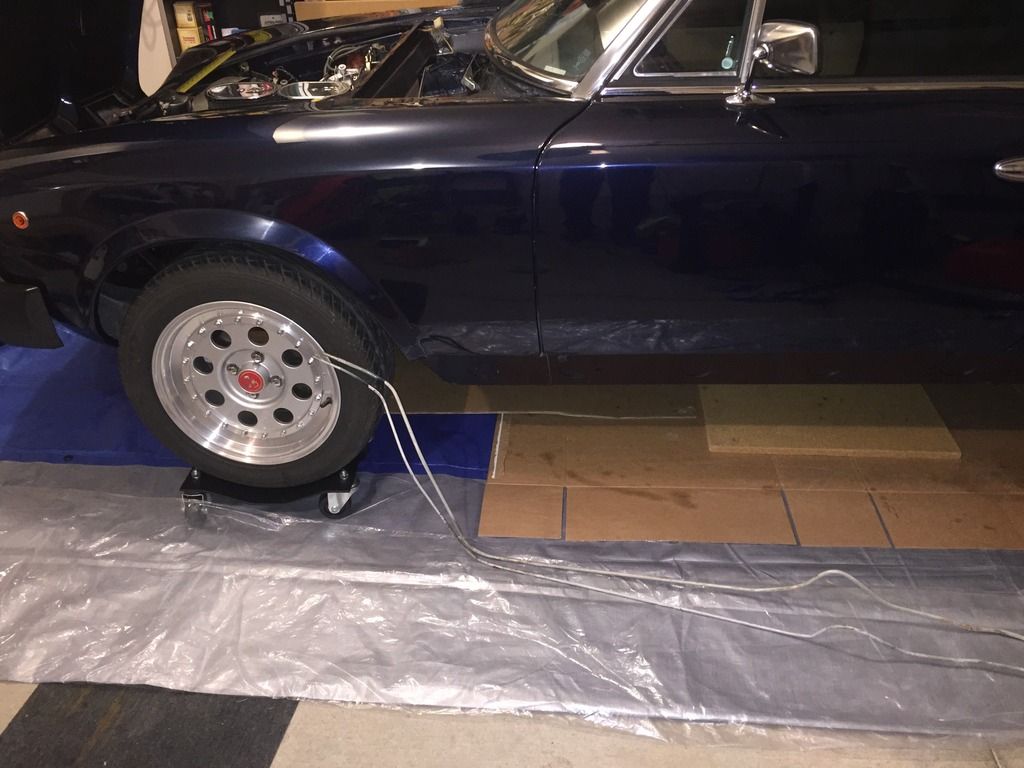
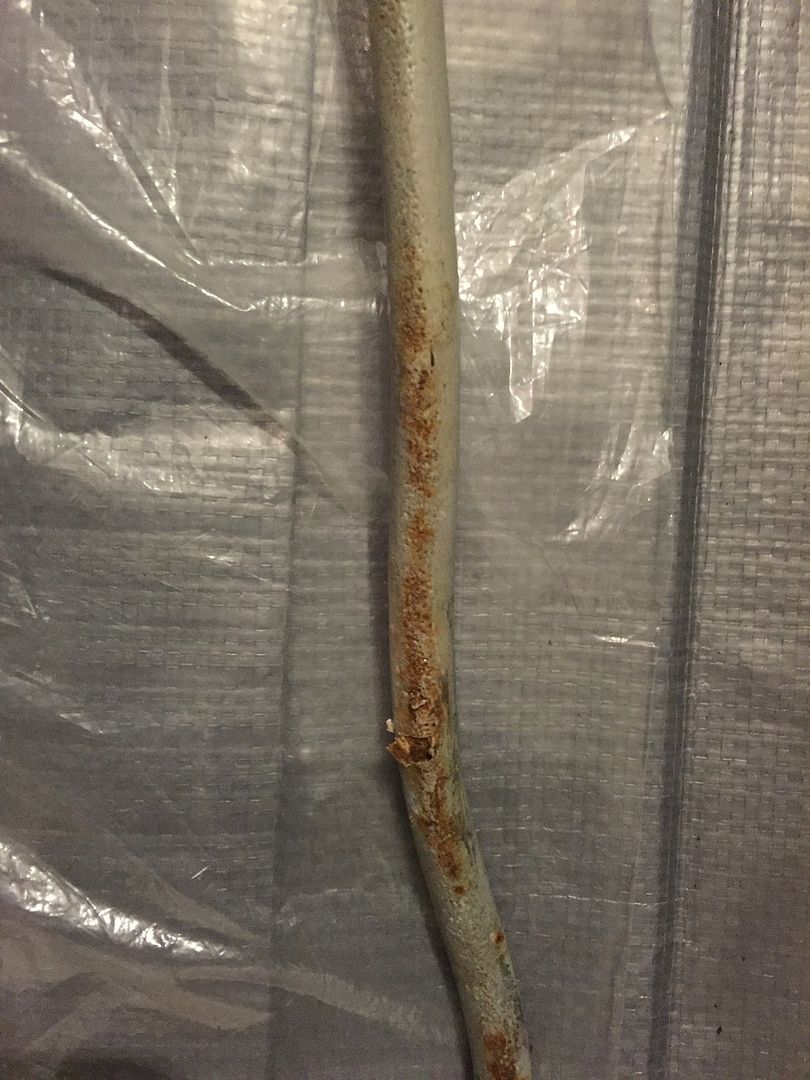
These were the clamps that held the rubber hose to the metal lines underneath the car. What type should I replace these with?
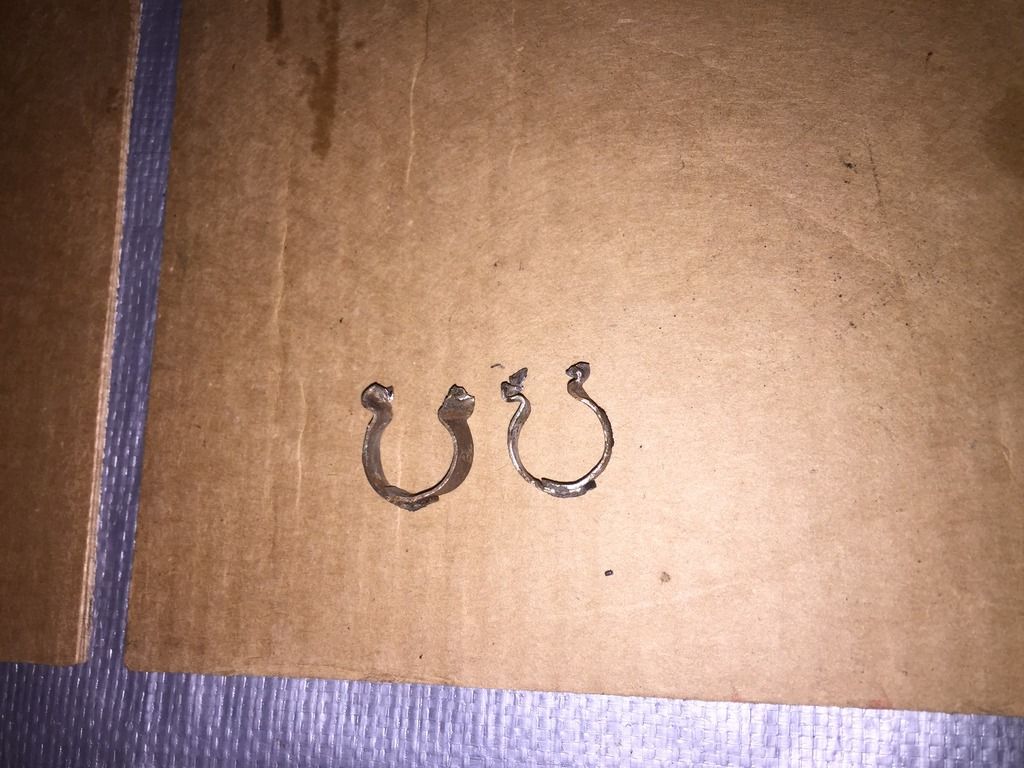
inside of an original cloth wrapped rubber fuel hose...spotless!
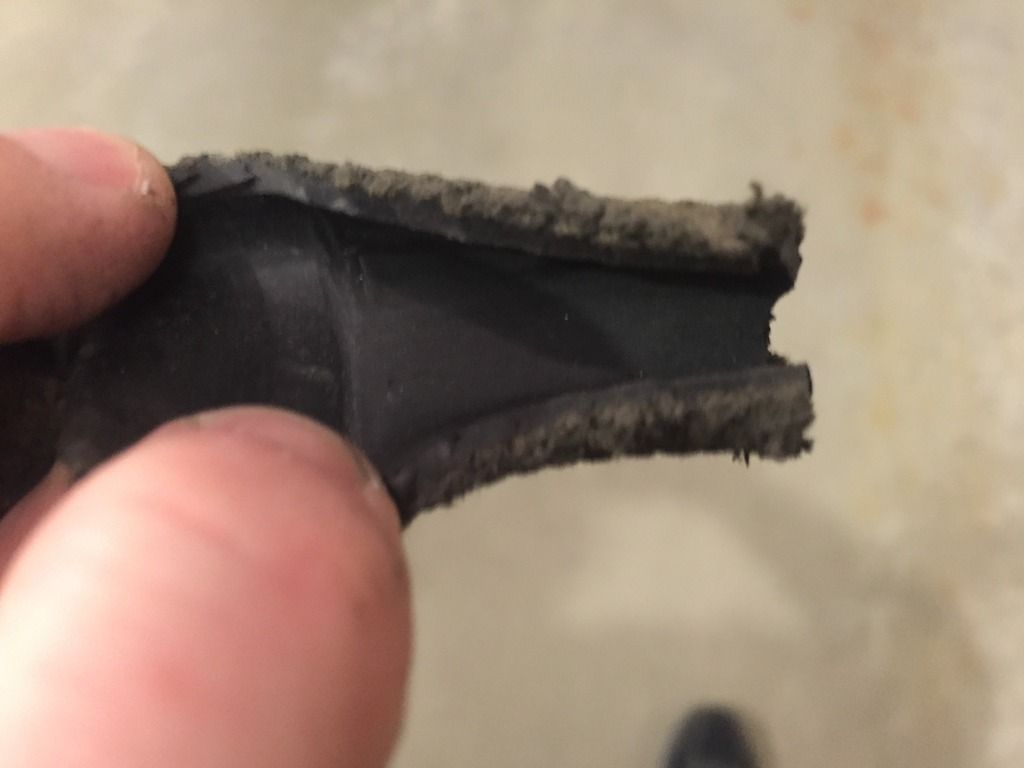
I'm going to fabricate some new lines from the coated steel tubing that napa sells, they have it in 5/16" and 1/4". Its the stuff with the green coating on it.


These were the clamps that held the rubber hose to the metal lines underneath the car. What type should I replace these with?

inside of an original cloth wrapped rubber fuel hose...spotless!

-
Frankd1
- Posts: 135
- Joined: Tue Sep 15, 2015 4:13 pm
- Your car is a: 1978 Spider
- Location: Southwestern Ontario, Canada
Re: My 1978 Spider progressive restoration
looking for advice on how to deal with this particular area of the floor panel..the photos show the driver side floor panel where it meets the bottom of the sill. There are two spots on the sill that are pitted but I can't punch through. The floor along that edge has some pitting too.
However, at the edge of the floor panel where it bends down 90 degrees and is tacked to the inside of the body edge rail underneath the car, it is bowed out. The corrosion from those two spots on the sill traveled down and pushed the edge of the floor panel in those areas outward slightly.
So....Should I cut this section of floor out along the bottom of the sill and then cut out the section of the sill and weld in new? I would then weld in a new section of panel to fill in the void of the removed strip, bending it down 90 degrees so I can weld that section to the inside edge of the body rail..
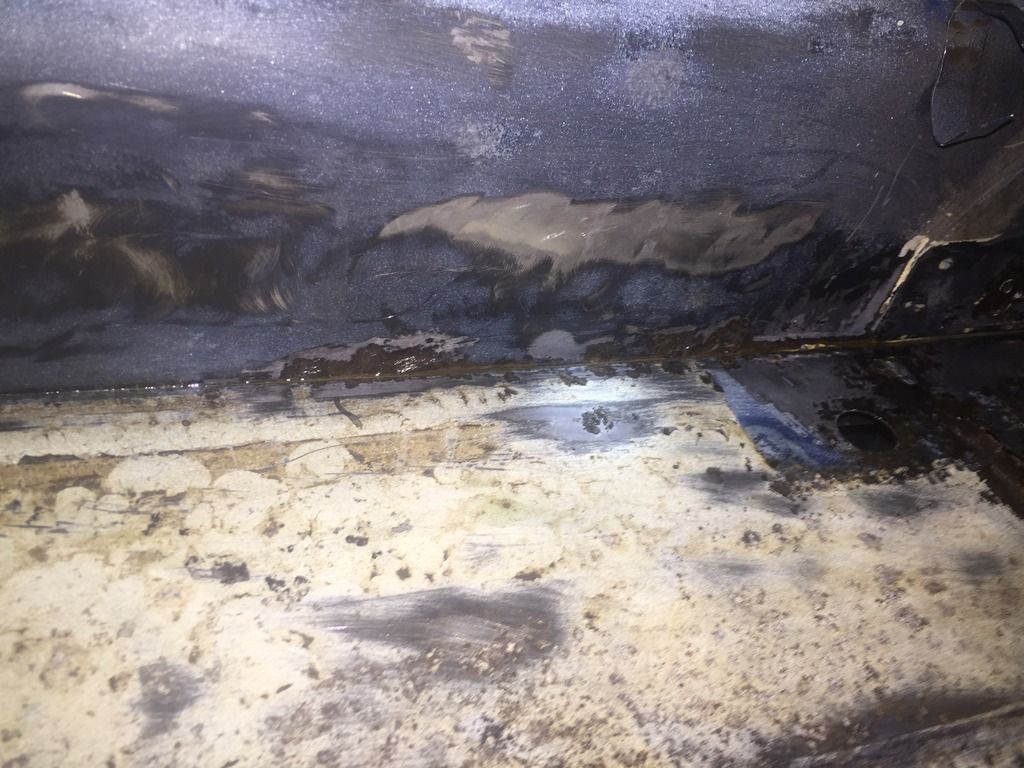
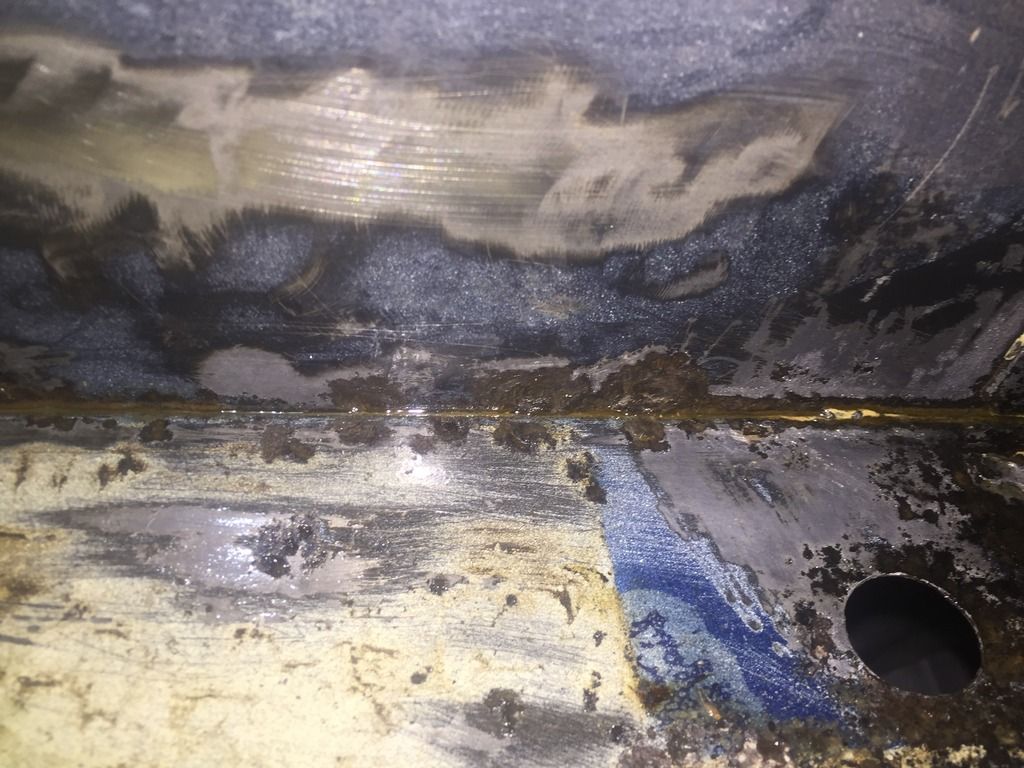
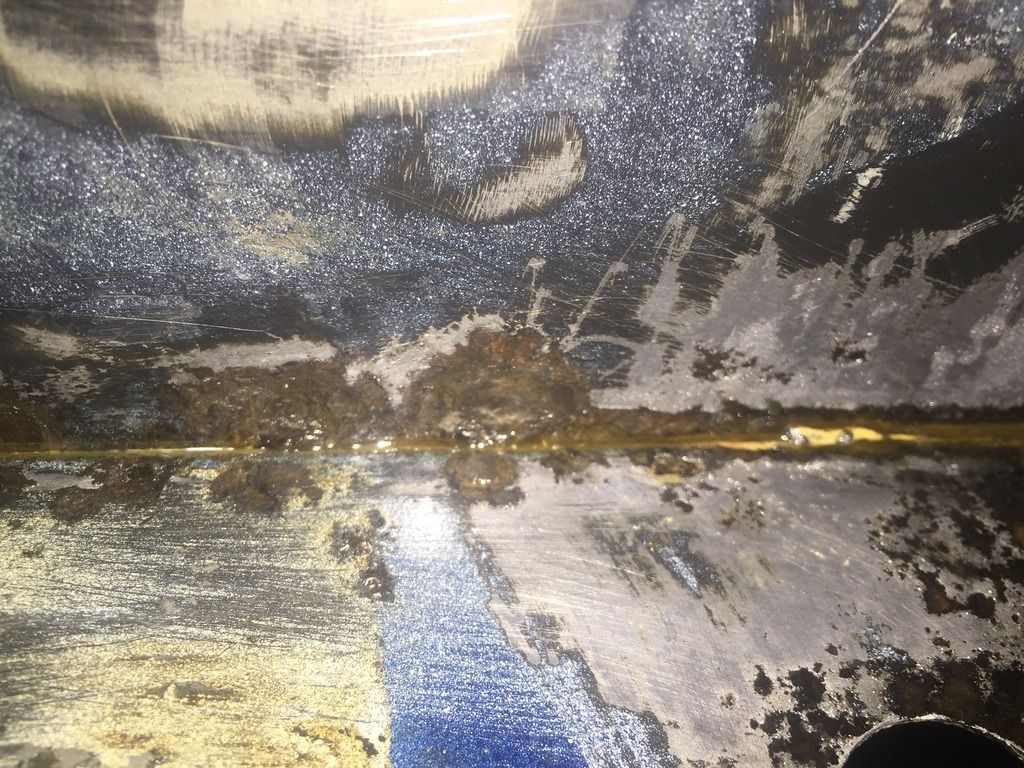
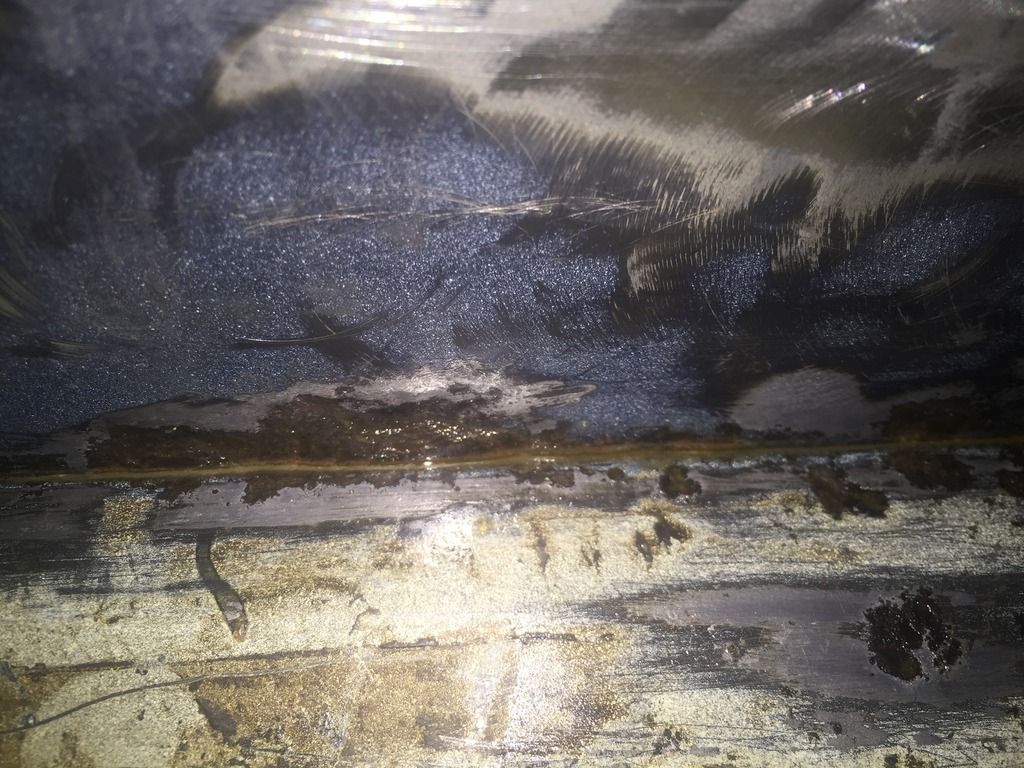
However, at the edge of the floor panel where it bends down 90 degrees and is tacked to the inside of the body edge rail underneath the car, it is bowed out. The corrosion from those two spots on the sill traveled down and pushed the edge of the floor panel in those areas outward slightly.
So....Should I cut this section of floor out along the bottom of the sill and then cut out the section of the sill and weld in new? I would then weld in a new section of panel to fill in the void of the removed strip, bending it down 90 degrees so I can weld that section to the inside edge of the body rail..




-
Frankd1
- Posts: 135
- Joined: Tue Sep 15, 2015 4:13 pm
- Your car is a: 1978 Spider
- Location: Southwestern Ontario, Canada
Re: My 1978 Spider progressive restoration
Is the gauge of steel for the floor panels 18ga?
What about the sill?
What about the sill?
- lglade
- Patron 2018

- Posts: 327
- Joined: Sat Dec 07, 2013 7:05 am
- Your car is a: 1984 Pininfarina
- Location: Mukilteo, WA
Re: My 1978 Spider progressive restoration
Regarding your clamps, check out Oetiker Stepless Clamps. They're the same thing as the factory clamps; you can get a set on eBay for about $50 including the installation tool. I bought a set when I tore into my fuel lines and was really pleased with the purchase. They're easy to install, cheaper than worm clamps, and they retain that stock look.
http://www.ebay.com/itm/1-Ear-Clamp-Kit ... Sw14xWNn1I
http://www.ebay.com/itm/1-Ear-Clamp-Kit ... Sw14xWNn1I
Lloyd Glade- Mukilteo, WA
1984 Pininfarina Spider Azzurra
1962 Fiat 500D - wife's car
2015 Subaru Outback
2017 Ford Focus RS
1984 Pininfarina Spider Azzurra
1962 Fiat 500D - wife's car
2015 Subaru Outback
2017 Ford Focus RS
-
Frankd1
- Posts: 135
- Joined: Tue Sep 15, 2015 4:13 pm
- Your car is a: 1978 Spider
- Location: Southwestern Ontario, Canada
Re: My 1978 Spider progressive restoration
Question for you guys:
Is door sag from the doors being open an issue on these cars?
I ask because I'm doing a lot of work on the interior which has me kneeling on a padded mat and hunched over the door sill into the cabin area. The doors are open for extended periods while I work away.
should I support the door when it's open?
I was thinking about using a bottle jack with a piece of wood raised just enough to make contact with the bottom flat surface of the door..
Is door sag from the doors being open an issue on these cars?
I ask because I'm doing a lot of work on the interior which has me kneeling on a padded mat and hunched over the door sill into the cabin area. The doors are open for extended periods while I work away.
should I support the door when it's open?
I was thinking about using a bottle jack with a piece of wood raised just enough to make contact with the bottom flat surface of the door..